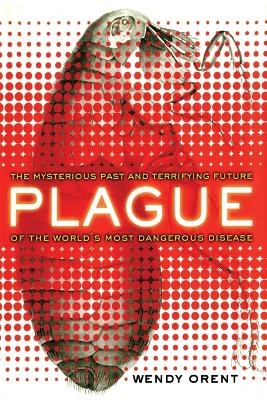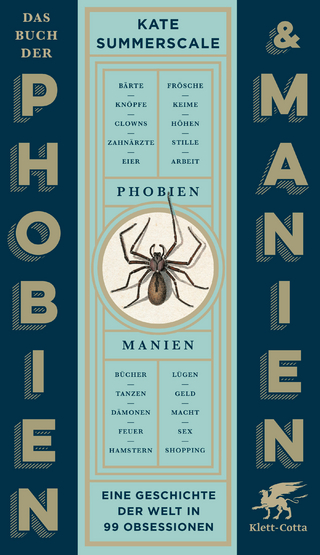
Plague
The Mysterious Past and Terrifying Future of the World's Most Dangerous Disease
Seiten
2012
The Free Press (Verlag)
978-1-4516-9585-4 (ISBN)
The Free Press (Verlag)
978-1-4516-9585-4 (ISBN)
Plague is a terrifying mystery.
In the Middle Ages, it wiped out 40 million people -- 40 percent of the total population in Europe. Seven hundred years earlier, the Justinian Plague destroyed the Byzantine Empire and ushered in the Middle Ages. The plague of London in the seventeenth century killed more than 1,000 people a day. In the early twentieth century, plague again swept Asia, taking the lives of 12 million in India alone.
Even more frightening is what it could do to us in the near future. Before the collapse of the Soviet Union, Russian scientists created genetically altered, antibiotic-resistant and vaccine-resistant strains of plague that can bypass the human immune system and spread directly from person to person. These weaponized strains still exist, and they could be replicated in almost any laboratory.
Wendy Orent's Plague pieces together a fascinating and terrifying historical whodunit. Drawing on the latest research in labs around the world, along with extensive interviews with American and Soviet plague experts, Orent offers nothing less than a biography of a disease. Plague helped bring down the Roman Empire and close the Middle Ages; it has had a dramatic impact on our history, yet we still do not fully understand its own evolution. Orent's retelling of the four great pandemics makes for gripping reading and solves many puzzles. Why did some pandemics jump from person to person, while others relied on insects as carriers? Why are some strains more virulent than others? Orent reveals the key differences among rat-based, prairie dog-based, and marmot-based plague. The marmots of Central Asia, in particular, have long been hosts to the most virulent and frightening form of the disease, a form that can travel around the world in the blink of an eye.
From its ability to hide out in the wild, only to spring back into humanity with a terrifying vengeance, to its elusive capacity to develop suddenly greater virulence and transmissibility, plague is a protean nightmare. To make matters worse, Orent's disturbing revelations about the former Soviet bioweapon programs suggest that the nightmare may not be over. Plague is chilling reading at the dawn of a new age of bioterrorism.
In the Middle Ages, it wiped out 40 million people -- 40 percent of the total population in Europe. Seven hundred years earlier, the Justinian Plague destroyed the Byzantine Empire and ushered in the Middle Ages. The plague of London in the seventeenth century killed more than 1,000 people a day. In the early twentieth century, plague again swept Asia, taking the lives of 12 million in India alone.
Even more frightening is what it could do to us in the near future. Before the collapse of the Soviet Union, Russian scientists created genetically altered, antibiotic-resistant and vaccine-resistant strains of plague that can bypass the human immune system and spread directly from person to person. These weaponized strains still exist, and they could be replicated in almost any laboratory.
Wendy Orent's Plague pieces together a fascinating and terrifying historical whodunit. Drawing on the latest research in labs around the world, along with extensive interviews with American and Soviet plague experts, Orent offers nothing less than a biography of a disease. Plague helped bring down the Roman Empire and close the Middle Ages; it has had a dramatic impact on our history, yet we still do not fully understand its own evolution. Orent's retelling of the four great pandemics makes for gripping reading and solves many puzzles. Why did some pandemics jump from person to person, while others relied on insects as carriers? Why are some strains more virulent than others? Orent reveals the key differences among rat-based, prairie dog-based, and marmot-based plague. The marmots of Central Asia, in particular, have long been hosts to the most virulent and frightening form of the disease, a form that can travel around the world in the blink of an eye.
From its ability to hide out in the wild, only to spring back into humanity with a terrifying vengeance, to its elusive capacity to develop suddenly greater virulence and transmissibility, plague is a protean nightmare. To make matters worse, Orent's disturbing revelations about the former Soviet bioweapon programs suggest that the nightmare may not be over. Plague is chilling reading at the dawn of a new age of bioterrorism.
Wendy Orent holds a Ph.D. in anthropology from the University of Michigan. She is a leading freelance science journalist who writes for theLos Angeles Times, The Washington Post, and The New Republic, among others. She recently collaborated on the English edition of Soviet bioweaponeer Igor Domaradskij's memoir, Biowarrior. Orent lives in Atlanta, Georgia.
| Erscheint lt. Verlag | 1.4.2012 |
|---|---|
| Verlagsort | New York |
| Sprache | englisch |
| Maße | 152 x 229 mm |
| Gewicht | 352 g |
| Themenwelt | Sachbuch/Ratgeber ► Natur / Technik |
| Geschichte ► Teilgebiete der Geschichte ► Kulturgeschichte | |
| Studium ► 2. Studienabschnitt (Klinik) ► Rechtsmedizin | |
| Studium ► Querschnittsbereiche ► Epidemiologie / Med. Biometrie | |
| Studium ► Querschnittsbereiche ► Geschichte / Ethik der Medizin | |
| ISBN-10 | 1-4516-9585-3 / 1451695853 |
| ISBN-13 | 978-1-4516-9585-4 / 9781451695854 |
| Zustand | Neuware |
| Haben Sie eine Frage zum Produkt? |
Mehr entdecken
aus dem Bereich
aus dem Bereich
der stille Abschied vom bäuerlichen Leben in Deutschland
Buch | Hardcover (2023)
C.H.Beck (Verlag)
23,00 €
vom Mittelalter bis zur Gegenwart
Buch | Softcover (2024)
C.H.Beck (Verlag)
12,00 €
eine Geschichte der Welt in 99 Obsessionen
Buch | Hardcover (2023)
Klett-Cotta (Verlag)
22,00 €


